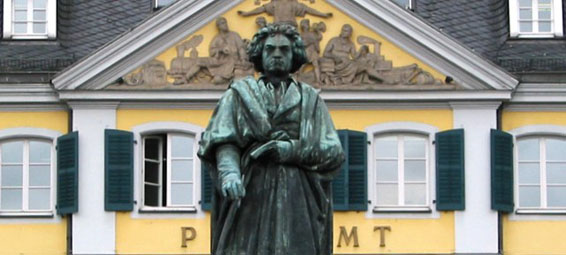Thursday night, for the second time in less than a month, the Dallas Symphony and music director Jaap van Zweden took on an all-Beethoven program Thursday evening at Meyerson Symphony Center. Beethoven remains one of the few composers deemed worthy of an entire evening devoted to his works, and this program proved why and how.
Van Zweden opened with the ear-grabbing introductory exclamation of the Egmont Overture, offering the dense intensity he characteristically brings to Beethoven. Within the context of this grand but relatively short, one-movement work, rife with struggle and passion and ecstasy, Van Zweden’s approach made perfect sense, and gave the evening plenty of momentum.
The high point, for this listener, came immediately after, with the humorous and brilliant Concerto for Piano, Violin, and Cello. Though the violin and cellos soloists—in this case, Chee-Yun and Lynn Harrell—have their moments, the pianist, playing on Beethoven’s own favorite instrument, can readily steal the spotlight. Without ever running over her colleagues, pianist Anne-Marie McDermott continually took this listener’s breath away with her subtly dramatic, crystalline tone and stunningly brilliant passage-work. The humor, joy, and camaraderie inherent in this unique work, with its complex but always engaging interaction among the soloists and between the solo group and the orchestra, emerged with glorious radiance.
The orchestra’s previous all-Beethoven concert, a program including the Third and Fifth Symphonies, had suffered from a weighty approach by Van Zweden, who produced a series of exciting moments without convincingly forming a dramatic whole. Here facing the Seventh Symphony, Van Zweden continued in that vein, mining numerous striking and powerful moments—no small feat in a work this familiar. Once again, however, as in his performances of the Third and Fifth, Van Zweden stayed on the mountaintop too long; the view was spectacular, but the air was often thin. All too often, Van Zweden was willing to sacrifice clarity and motion for a quick thrill.
The audience clearly loved both Beethoven and Van Zweden, responding with cheers, whistles, and extended applause. If Van Zweden’s Mahleresque approach to Beethoven’s symphonies may not be ideal, it clearly works on several levels at least.





